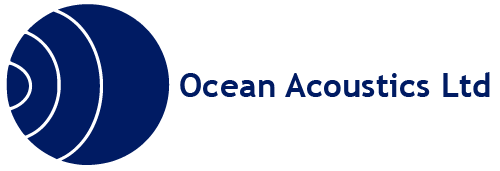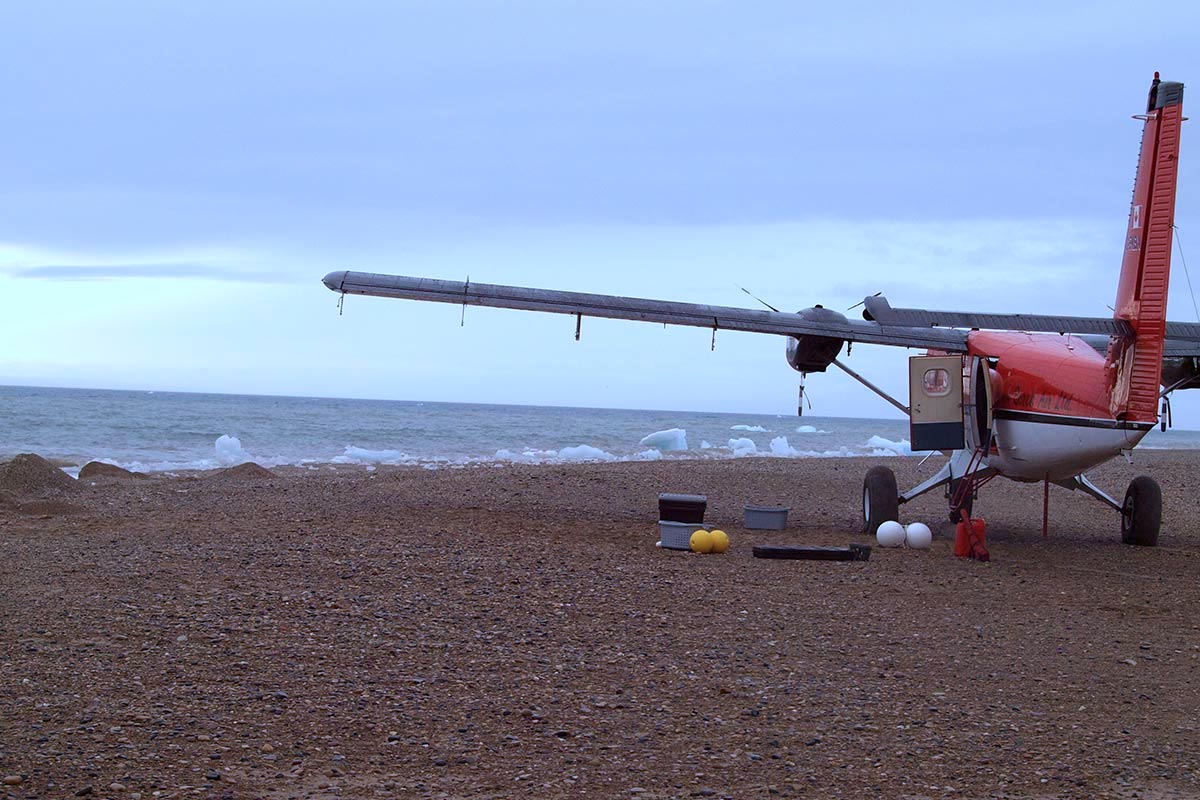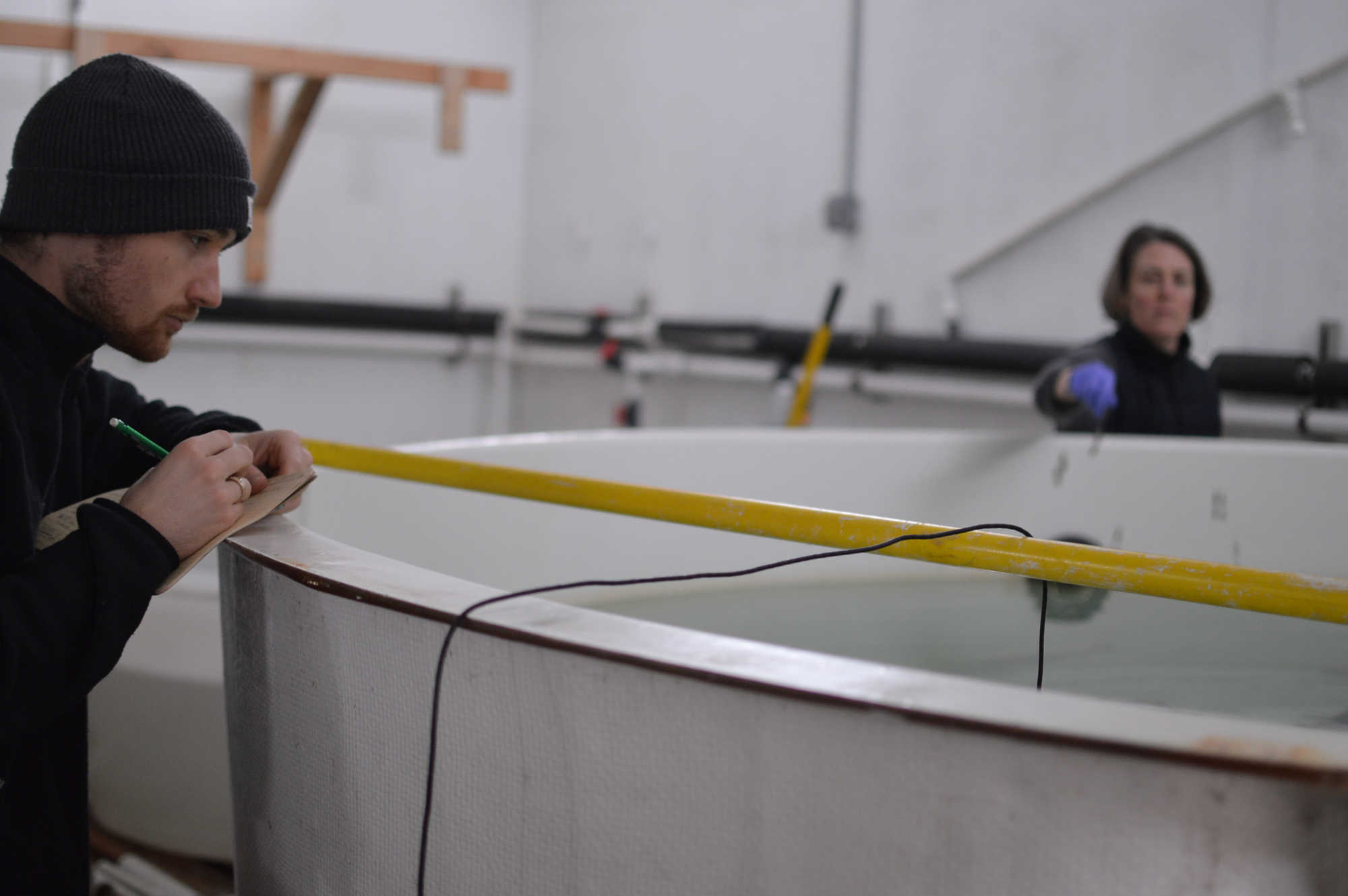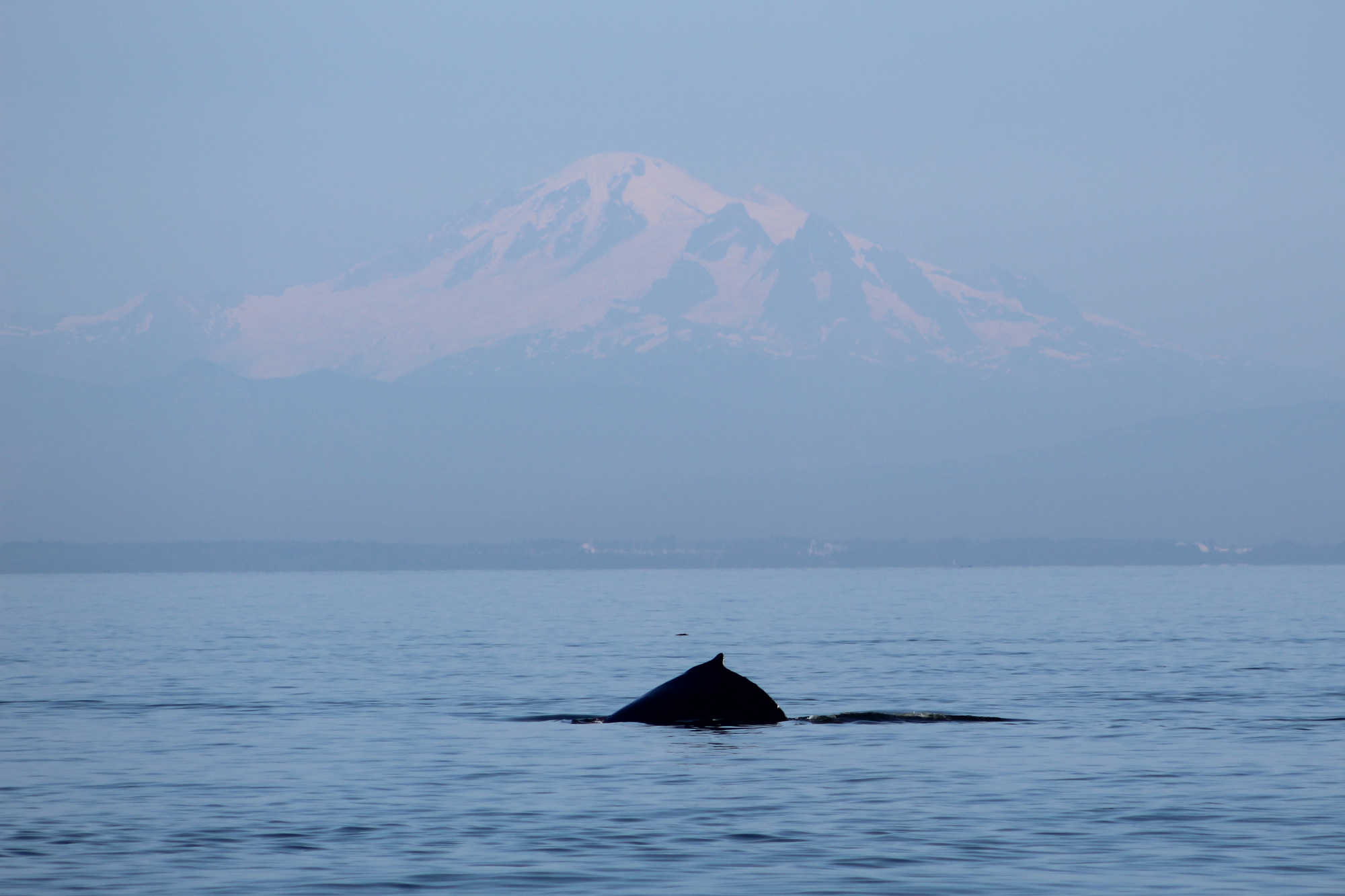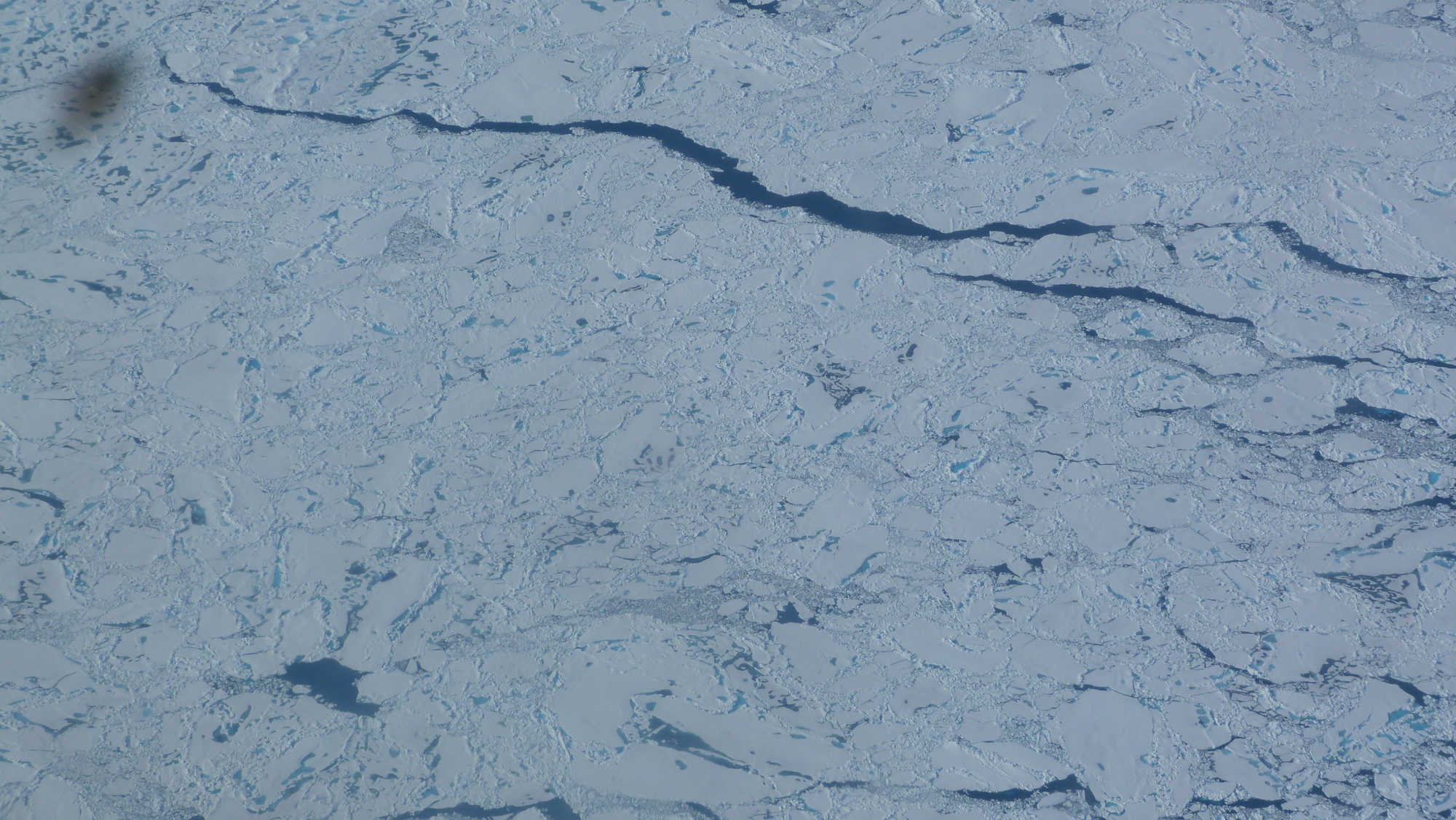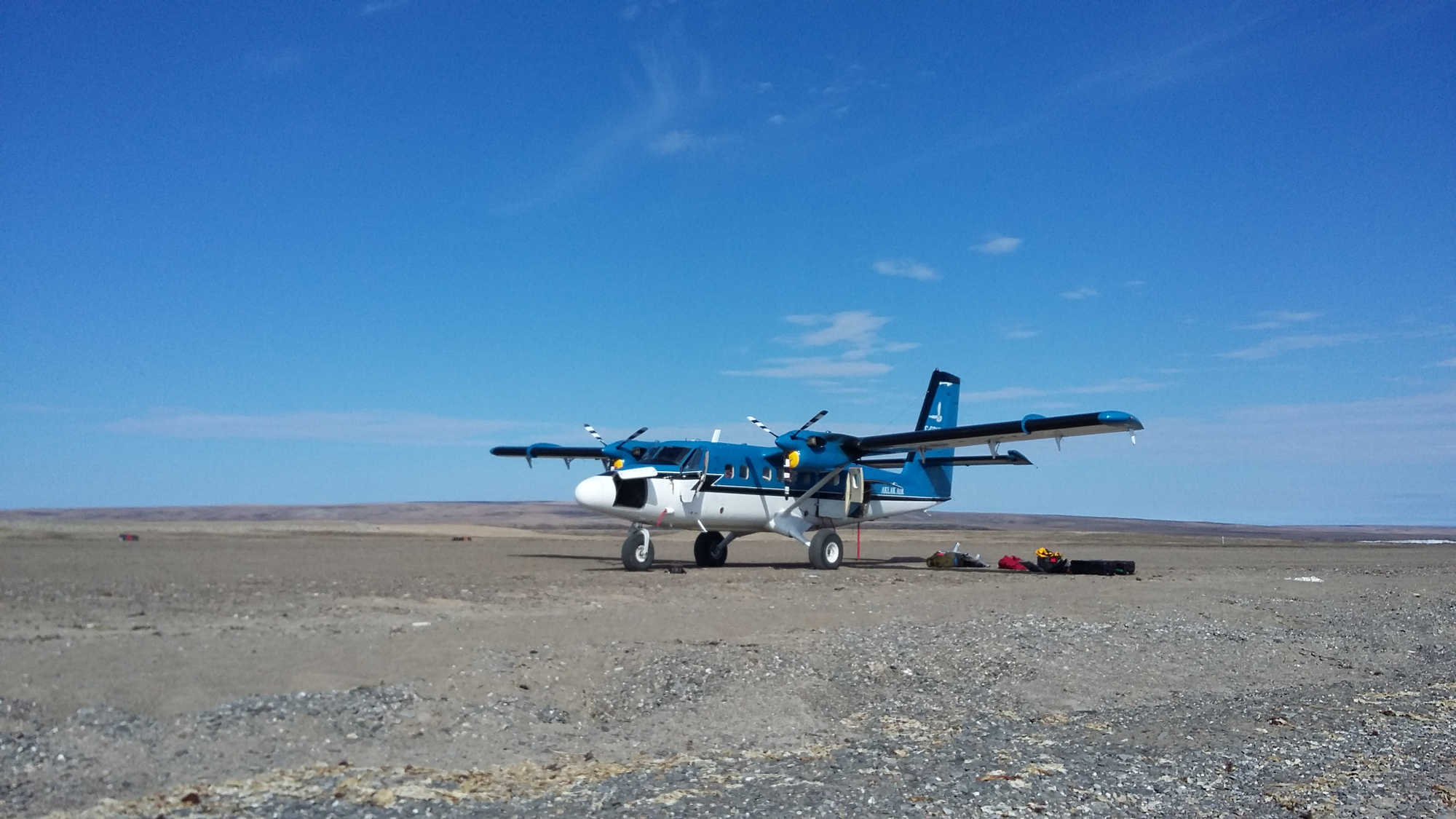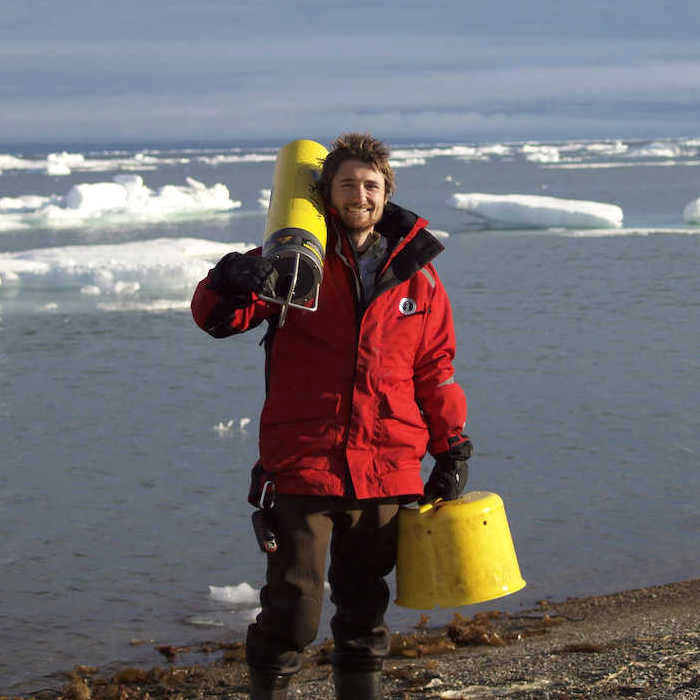Our Canadian projects have been centered primarily in British Columbia and the western Canadian Arctic (NWT), in collaboration with WCS Canada, University of Victoria and Jasco Applied Sciences. Using SoundTraps and SM3M recorders, we have been processing multi-year long acoustic datasets that provide knowledge on marine mammal movements and the potential impact of vessel noise.
Current Projects:
Modeling vessel noise propagation in the Canadian Arctic
The presence of sea ice has effectively preserved the western Canadian Arctic’s natural underwater soundscape by making it inaccessible to most commercial shipping. However, the presence of sea ice has been declining (a trend that is expected to continue) and thus the region is becoming more accessible for shipping – meaning increased interactions with marine mammals and fish are expected.
As well as researching the potential impact of masking effects from increased vessel activity in the NW Passage, we have been undertaking advanced propagation modeling of vessel noise through the Canadian Arctic for WCS Canada. The two implementations being used are the commonly used parabolic equation method (specifically RAMGeo code) and Bellhop ray tracing. The data is being used to help WCS Canada formulate recommendations and strategies for protecting the whales in the Canadian Arctic from increased vessel traffic.
Monitoring small boat traffic to investigate exposure risk to endangered Southern Resident Killer Whales in BC’s Salish Sea
In collaboration with Ocean Networks Canada and the University of Victoria, we have been investigating the acoustic signatures of small boat traffic to develop a Salish Sea specific boat detector. The detector that has been developed is a continuation of our Australian vessel detectors ( https://ocean-acoustics.com/australia/ ). The key improvements have been the integration of DEMON (Detection of Envelope Modulation on Noise) processing and image processing of both the DEMON spectrograms and power spectral densities. The advantage of these methods being integrated into the detector/classification algorithm is the performance is not impeded by self-noise of the system or GPS clocks. The system also has a camera system installed, and thus every vessel recorded within the set distance has a photograph of the vessel, therefore allowing us to investigate vessel-type classifiers.
The end-goal of this project is to run the automated detectors to determine noise exposure risk on southern resident killer whales.
Completed Projects:
Assessing Vessel Slowdown as a Mitigation Strategy for Reducing Acoustic Masking
Increased shipping in the Arctic due to lower seasonal ice presence could lead to adverse noise effects on marine life near shipping lanes, in an environment that has historically been very quiet. As a result, a lot of work has/is being done to figure out a way that vessel traffic and noise can be managed in order to protect vulnerable marine life. Re-routing shipping corridors to avoid sensitive marine mammal habitat, regulating the number of vessels in certain areas at any one, and slowing vessels down so to lower the noise emissions and allow more time for whales to swim out of a ship’s way (i.e. lower the collision risk), are three possible strategies to lower shipping impacts on marine mammals.
In the Northwest Passage, there are areas where ships are unable to be re-routed or the shipping lanes be kept away from sensitive marine mammal habitat. For example, narrow passageways like the Prince of Wales Strait between Banks and Victoria Islands. In those areas, vessel slowdown could be the answer to reduce noise-related impacts on the whales and seals.
For this project, we have been undertaking advanced acoustic modelling coupled with year-long passive acoustic monitoring of marine mammals, to investigate just how effective slowing vessels down might be at reducing acoustic masking in marine mammals. Since marine mammals depend on sound for critical life processes, acoustic masking can impair their ability to locate food, stay close together, communicate with one another and avoid predators or danger. Over the course of 10 months, we investigated how much relief in acoustic masking could be achieved if a container and cruise ship slowed down from 25 knots to 15 knots.
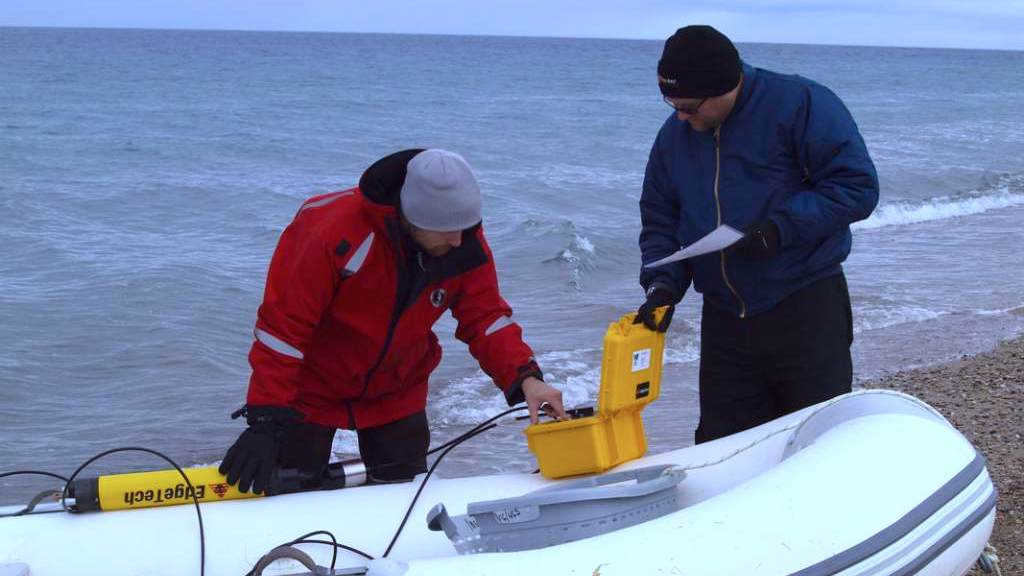
Dr Matt Pine (left) testing the EdgeTech acoustic release before deployment in the Prince of Wales Strait, NWT.
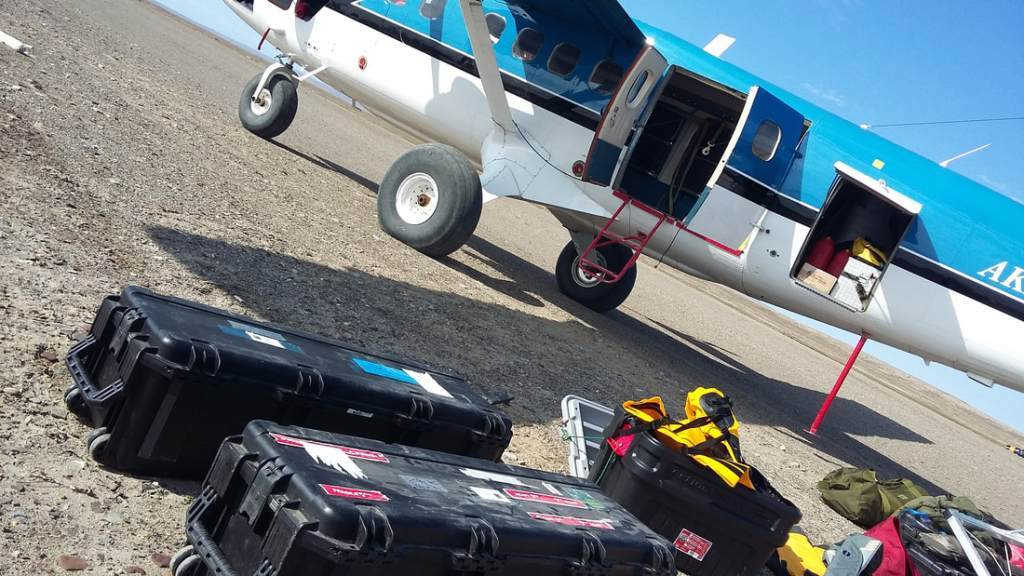
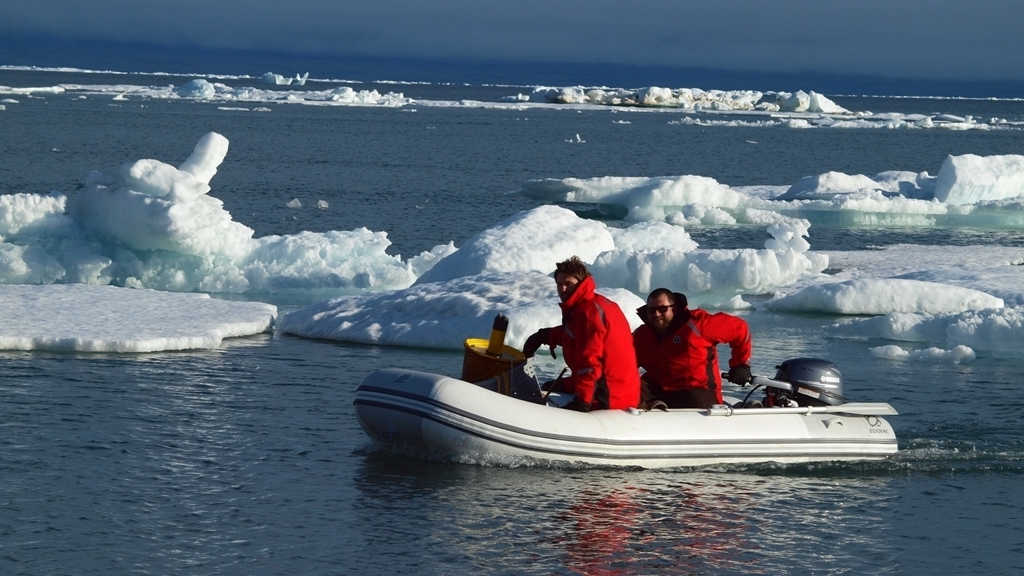
Dr Matt Pine of OAL (left) and Dr William Halliday of WCS Canada (right) return to shore after retrieving the SM3M recorder a year since it was deployed. The acoustic data is used for marine mammal monitoring and soundscape analyses.
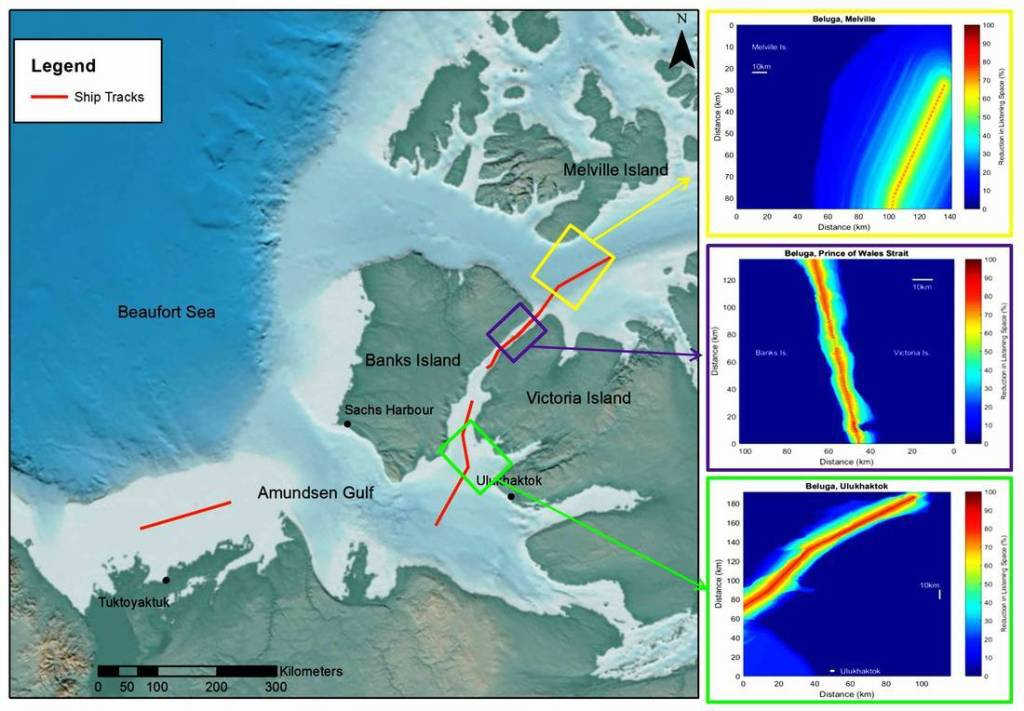
An example output of the masking effects model from a passing ship in the NW Passage.
